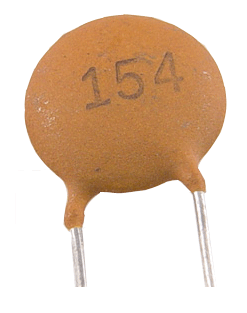Capacitors
Capacitors is a passive electronic component which has an ability to change or store energy. It is made up of two parallel plates separated by an insulating material called as dielectric. When connected to a voltage source, a momentary changing current deposits charge on plates, establishing an electric field. Energy is stored in this field & may be returned by discharging the capacitor through a load.
Capacitance measures the ability of a capacitor to store charge. It may be defined as the amount of charge required to create a unit potential difference between its plates.
If Q is the charge on one of the plates of capacitor & if P.D. of V volts is established between them, then
C = Q/V (farad)
The dielectric materials between the plates of the capacitor are of the following types:
a. Air b. Bakelite c. Ceramic
d. Fiber e. Waxed paper f. Porcelain
g. Polystyrene h. Mica i. Glass
| Type | Dielectric used |
| Paper Capacitor | Waxed paper |
| Plastic film capacitor | Plastic film |
| Mica capacitors | Thin sheet of mica |
| Ceramic | Ceramic |
| Glass | Flexible glass ribbon |
| Electrolyte | Oxide layer |
Table 2: Types and Dielectric used.
In practical applications generally ceramic & electrolytic capacitors are used.
Electrolytic Capacitors: An electrolytic capacitor contains two aluminum electrodes having oxide film which acts as a dielectric. The capacitors available in 1V to 700V range. The value & voltage rating is marked on the capacitor.
Ceramic Capacitors: This also called as disc type & generally values ranges from 47pf to 0.05µf. The dielectric used is a ceramic material.
Other related topics to capacitor

